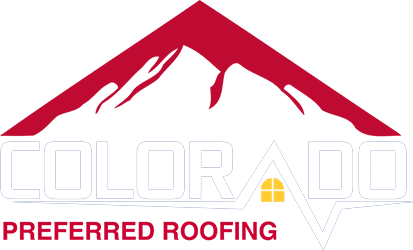When thinking about roof care, most homeowners focus on shingles and gutters. But there’s an unsung hero inside your home that significantly impacts your roof’s health: your attic insulation. In Colorado’s climate of scorching summers and freezing winters, proper attic insulation is essential. It not only keeps your living space comfortable and lowers energy bills, but it also plays a key role in prolonging the life of your roof. How? By regulating attic temperatures and preventing issues like ice dams and excessive heat buildup. Let’s explore how insulating your attic can protect your roof through Colorado’s weather extremes.
The Connection Between Attic Insulation and Your Roof
Your attic is the buffer zone between your heated/cooled living areas and the roof overhead. In the winter, heat from your home rises into the attic. Without enough insulation, that heat can warm the underside of your roof deck and cause the snow on your roof to melt unevenly. When that melted snow runs down and refreezes at the eaves, it creates ice dams – thick ridges of ice that can lift shingles and lead to leaks. In the summer, the sun beats down on your roof and heats up the attic. If heat builds up excessively, it can bake your roofing materials from below, causing shingles to age faster. Good insulation helps stabilize your attic temperature, keeping heat where you want it (inside in winter, outside in summer) and by doing so, it indirectly safeguards your roof.
Benefits of Proper Insulation in Colorado Homes
Ensuring your attic has the right amount of insulation (measured by R-value) for Colorado’s climate zone yields multiple benefits:
- Prevents Ice Dams: As mentioned, insulation keeps attic heat from melting roof snow too quickly. By maintaining a cold roof deck in winter, you avoid those damaging ice dams along your eaves. This means a lower risk of water backing up under shingles during cold snaps.
- Extends Roof Lifespan: A cooler attic in summer means less heat stress on your shingles and roof structure. Extremely high attic temperatures can warp roof decking and degrade shingles over time. Insulation helps keep attic temps in check, especially when combined with proper ventilation.
- Energy Efficiency: Of course, insulation also lowers your heating and cooling costs. But beyond comfort, this energy efficiency has a roof benefit: reducing the expansion and contraction cycles your roof undergoes. Large temperature swings between a hot attic and cold exterior can cause materials to expand/contract frequently. Smoother temperature control lessens this strain.
- Moisture Control: In a well-insulated attic, you’re less likely to have warm, moist air condensing on a cold roof deck. Moisture from indoor air can cause mold or rot if it condenses in the attic. Insulation, along with vapor barriers in some cases, helps keep the roof structure dry.
Avoiding Ice Dams with Insulation and Ventilation
Ice dams are a notorious problem in many Colorado mountain and Front Range homes. They often occur when an attic is under-insulated or poorly ventilated. The warm air in the attic causes snow melt, which refreezes at the gutters. One solution is to add insulation to recommended levels (the U.S. Department of Energy recommends around R-49 to R-60 for attics in our region). Equally important is attic ventilation – cool outside air needs to circulate in the attic to carry away any warmth that does escape. Together, sufficient insulation and ventilation keep your roof cold enough in winter so that snow melts gradually and evenly, ideally only when the outdoor temperature rises. If you’ve experienced icicles or ice dams dangling from your Lakewood or Littleton home’s eaves, it’s a sign you should have your attic insulation evaluated.
When to Upgrade Your Attic Insulation
How do you know if your insulation is up to par? If your home is older (built several decades ago), it may have far less insulation than what is recommended today. You might also notice signs of inadequate insulation like uneven heating (rooms that are hard to keep warm), or excessive heat in upstairs rooms in the summer. Visible clues in the attic include insulation that is below the level of the joists or spots that look thinner. If you can see the ceiling joists, you likely need more insulation. Another hint is dust or dirt on insulation – if insulation is dirty, it might be due to airflow from gaps, meaning it’s not doing its job effectively.
Upgrading insulation is often a straightforward process. Professionals can blow in additional fiberglass or cellulose insulation to beef up your R-value, or add batts if appropriate. Not only will you notice a more comfortable home, but your roof will thank you too. An insulation upgrade can usually be done in a day and will immediately start contributing to a more stable environment for your roof.
Protecting Your Roof and Home with Proper Insulation
Attic insulation might be out of sight, but it should not be out of mind – especially in a place like Colorado where we see temperature extremes. By investing in good insulation, you’re effectively adding a shield that works 24/7 to moderate the conditions your roof experiences. It’s an often overlooked aspect of roof maintenance. Along with regular roof inspections and gutter care, checking on your insulation should be on your home upkeep checklist.
Stay Warm, Cool, and Dry: If you’re unsure about the state of your attic insulation, consider getting an energy audit or an insulation inspection. At Colorado Preferred Roofing, we offer insulation services as part of our commitment to whole-home protection. We can assess whether your current insulation is sufficient and recommend additions or improvements. A well-insulated and ventilated attic means a healthier roof and a more comfortable home for you. Feel free to contact us to learn more about improving your home’s insulation or to schedule a roof and attic evaluation. Your Colorado roof will be better prepared for whatever Mother Nature throws its way!

